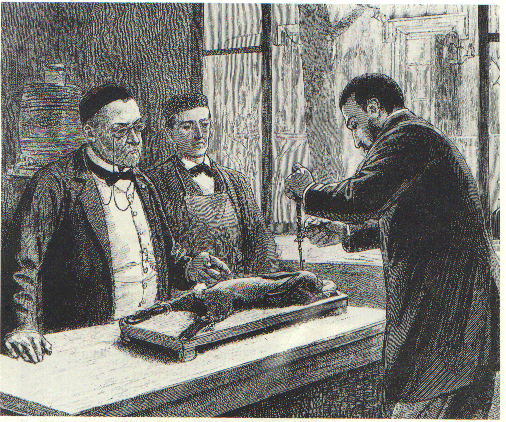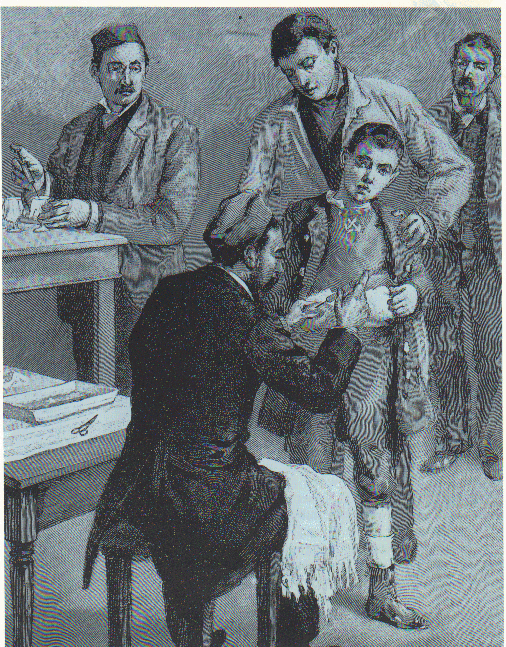When Louis began his work on rabies, it had already been discovered that the microbe that caused the disease was present in the saliva of its victims. Because madness is one of the symptoms of rabies, Louis reasoned that the microbe must attack the central nervous system.
Louis first studied the saliva of animals and humans who had died of rabies and confirmed the presence of a specific microbe, too small to be seen through a microscope, which we call a virus now. He then examined tissue from the brain and spinal cords of some of the victims and found the virus there too. Louis became certain it would be possible to make a vaccine using weakened strains of the disease-causing organism (attenuated vaccine) from a weakened strain of the virus.
At last, Louis was satisfied that he could prevent the dreaded disease in dogs, but he did not dare test the drug on a human volunteer. If Louis's rabies vaccine was found to be too strong for use in humans, trials using healthy people could result in their catching the dreaded disease.

But on 6 July, 1885, the decision to carry out a human trail was made for him. A nine-year-old boy, Joseph Meister, was brought to him by his distraught mother. Joseph had been bitten many times by a rabid dog in his village, alsace two days before, and she begged Louis to try to save her son. If the vaccine failed, Louis knew he would not be blamed for Joseph's death, but if Louis did nothing, Joseph was likely to die anyway. It was a terrible delemma for Louis, but he dicided the vaccine was Joseph only hope.

Louis injected the vaccine into Joseph twelve times over the course of ten days. Joseph's bites healed, and he went home several days after the treatment without having contracted rabies. Young Joseph felt he owed his life to Louis and when he grew up, he became the gatekeeper at the Pasteur Institute, where he took special care of Louis's tomb.
The news of the cure flashed throughout Europe, and victims of bites from rabid animals flooded into Paris to received Louis's treatment.
Louis had successfully developed a vaccine for use in humans from one made for animals. The developed of the rabies vaccine had saved thousands of lives and showed the way for the development of vaccines against many other diseases. Louis had won the battle against rabies.
Pasteur outstanding achievement in developing a rabies vaccine earned him a praise and further fame.